Since I asked how to do kernel smoothing I wanted to provide an answer for that.
I'll start by just adding it as extra data to data frame and plotting that, much as the accepted answer does.
First here is the data and packages I'll be using (same as in my post):
library(dplyr)
library(ggplot2) # ggplot2_2.2.1
set.seed(1234)
expand.grid(z = -5:2, x = seq(-5,5, len = 50)) %>%
mutate(y = dnorm(x) + 0.4*runif(n())) %>%
filter(z <= x) ->
Z
Next here is the plot:
Z %>%
group_by(z) %>%
do(data.frame(ksmooth(.$x, .$y, 'normal', bandwidth = 2))) %>%
ggplot(aes(x,y)) +
geom_line(data = Z) +
geom_line(color = 'blue', size = 1) +
facet_wrap(~ z)
which simply uses ksmooth from base R. Note that it's quite simple to avoid the dynamic smoothing (making the bandwidth constant takes care of that). In fact, one can recover the a dynamic style smoothing (i.e., more like geom_smooth) as follows:
Z %>%
group_by(z) %>%
do(data.frame(ksmooth(.$x, .$y, 'normal', bandwidth = diff(range(.$x))/5))) %>%
ggplot(aes(x,y)) +
geom_line(data = Z) +
geom_line(color = 'blue', size = 1) +
facet_wrap(~ z)
I also followed the example in https://github.com/hrbrmstr/ggalt/blob/master/R/geom_xspline.r to turn this idea into an actual stat_ and geom_ as follows:
geom_ksmooth <- function(mapping = NULL, data = NULL, stat = "ksmooth",
position = "identity", na.rm = TRUE, show.legend = NA,
inherit.aes = TRUE,
bandwidth = 0.5, ...) {
layer(
geom = GeomKsmooth,
mapping = mapping,
data = data,
stat = stat,
position = position,
show.legend = show.legend,
inherit.aes = inherit.aes,
params = list(bandwidth = bandwidth,
...)
)
}
GeomKsmooth <- ggproto("GeomKsmooth", GeomLine,
required_aes = c("x", "y"),
default_aes = aes(colour = "blue", size = 1, linetype = 1, alpha = NA)
)
stat_ksmooth <- function(mapping = NULL, data = NULL, geom = "line",
position = "identity", na.rm = TRUE, show.legend = NA, inherit.aes = TRUE,
bandwidth = 0.5, ...) {
layer(
stat = StatKsmooth,
data = data,
mapping = mapping,
geom = geom,
position = position,
show.legend = show.legend,
inherit.aes = inherit.aes,
params = list(bandwidth = bandwidth,
...
)
)
}
StatKsmooth <- ggproto("StatKsmooth", Stat,
required_aes = c("x", "y"),
compute_group = function(self, data, scales, params,
bandwidth = 0.5) {
data.frame(ksmooth(data$x, data$y, kernel = 'normal', bandwidth = bandwidth))
}
)
(Note that I have a very poor understanding of the above code.) But now we can do:
Z %>%
ggplot(aes(x,y)) +
geom_line() +
geom_ksmooth(bandwidth = 2) +
facet_wrap(~ z)
And the smoothing is not dynamic, as I originally wanted.
I do wonder if there is a simpler way, though.
 The z=-5 facet is fine, but as one moves to subsequent facets the smoothing seems to 'overfit'; indeed z=-1 already suffers from that, and in the last facet, z=2, the smoothed line fits the data perfectly. Ideally, what I would like is a less dynamic smoothing that for example always smooths about 4 points (or kernel smoothing with a fixed kernel).
The z=-5 facet is fine, but as one moves to subsequent facets the smoothing seems to 'overfit'; indeed z=-1 already suffers from that, and in the last facet, z=2, the smoothed line fits the data perfectly. Ideally, what I would like is a less dynamic smoothing that for example always smooths about 4 points (or kernel smoothing with a fixed kernel).